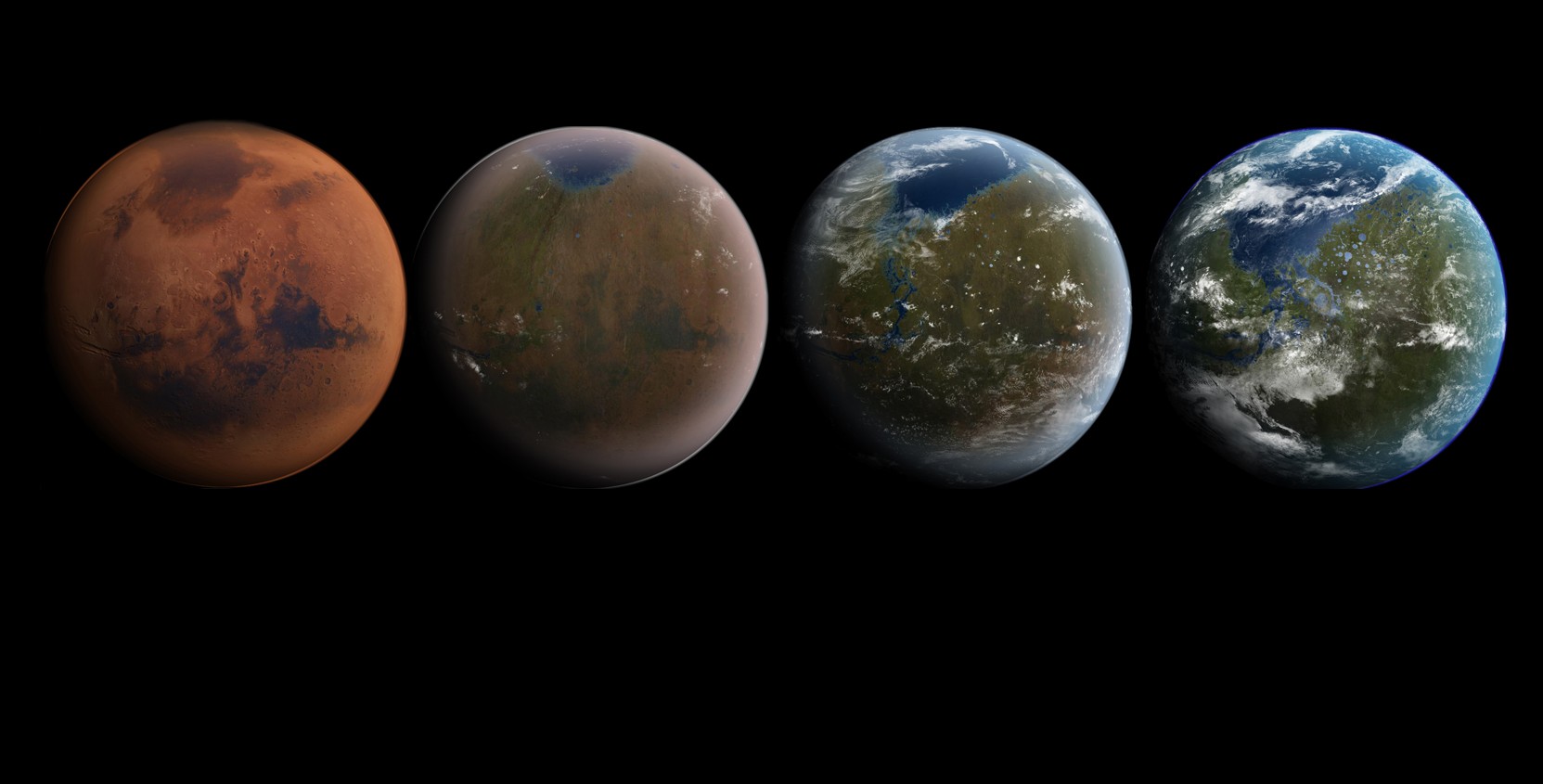
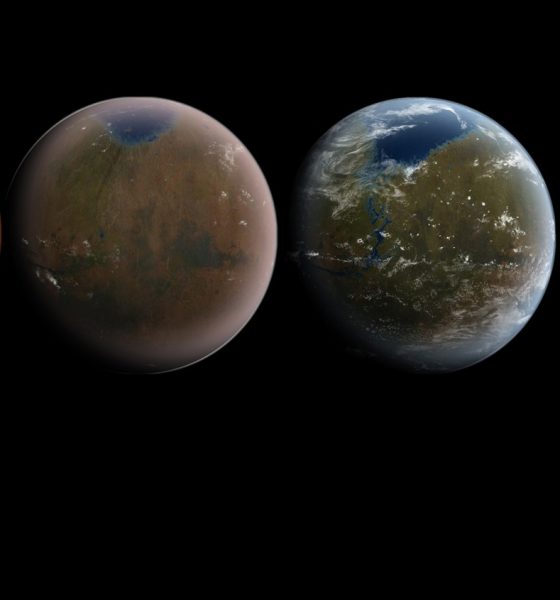
Lifestyle
Elon Musk’s plans to terraform Mars: Who knew clean energy could be so controversial?
I have to admit, I’ve been pretty fascinated with the idea of terraforming Mars ever since seeing an IMAX film discussing the topic during my week at Space Camp, um, a few years back…or so. While I’m more interested in permanent space colonies (e.g., Star Trek: Deep Space Nine), I’m also very interested in multiplanetary habitation for humans, and transforming the Martian environment rather than constantly fighting to survive in it makes me keep an open mind to the idea.
That, and the fact that Elon Musk has a successful rocket company that was founded with long-term occupation of Mars as its core purpose are handy motivators. The t-shirts are are a great plus, too. The topic is now in the headlines again (with a brand new t-shirt to boot), and the players have taken up their usual places on the game board.
Musk has doubled down on his terraforming strategy, tweeting “Nuke Mars!” and then, “T-shirt soon.” He explained a little more a few days later in response to radiation concerns with, “Nuke Mars refers to a continuous stream of very low fallout nuclear fusion explosions above the atmosphere to create artificial suns. Much like our sun, this would not cause Mars to become radioactive.” Numerous articles were then written or referred back to in response, all arguing that the calculations for such a feat were either highly unlikely or near impossible as a viable terraforming solution. I won’t pretend to have a numbers-based opinion on the matter because, frankly, I always wondered whether it would even matter if it was possible.
Working through the politics of clean energy is hard enough when you’re just talking about converting to battery-electric vehicles like what Tesla makes to reduce the use of fossil fuels. Then, when you include nuclear energy into the mix as a zero emissions option, the fights really break out thanks to the awful consequences that came from nuclear plant failures of the past and the long-term impacts that nuclear weapons have caused in wartime. It doesn’t really matter if the science says it’s pretty safe with current technology – fear of the consequences overtakes any data-driven discussion. So, when someone like Elon Musk says he wants to use a technology on Mars that struggles so much on Earth, it really feels like much ado about nothing because it will never get a green light in the first place let alone gather the resources needed to execute.
A different concept that seems to be a bit more acceptable to the science community involves reflective satellites. Musk floated this option in a tweet, saying “Might make sense to have thousands of solar reflector satellites ? to warm Mars vs artificial suns (tbd).” Since SpaceX is already in the business of manufacturing satellites at the scale that would be needed for such an undertaking with Starlink, the feasibility factor has more points than the thousands of nuclear bombs needed for an artificial sun near Mars. And, hey! Solar power (amplification) for the win, right?
However, I’m not sure whether NASA would acknowledge this strategy, either, since they’ve basically already scrubbed terraforming as an option in their opinion. A study released by the agency in July 2018 was pretty clear in its conclusions:
“Mars does not retain enough carbon dioxide that could practically be put back into the atmosphere to warm Mars, according to a new NASA-sponsored study. Transforming the inhospitable Martian environment into a place astronauts could explore without life support is not possible without technology well beyond today’s capabilities.” – Bill Steigerwald / Nancy Jones for NASA Goddard Space Flight Center.
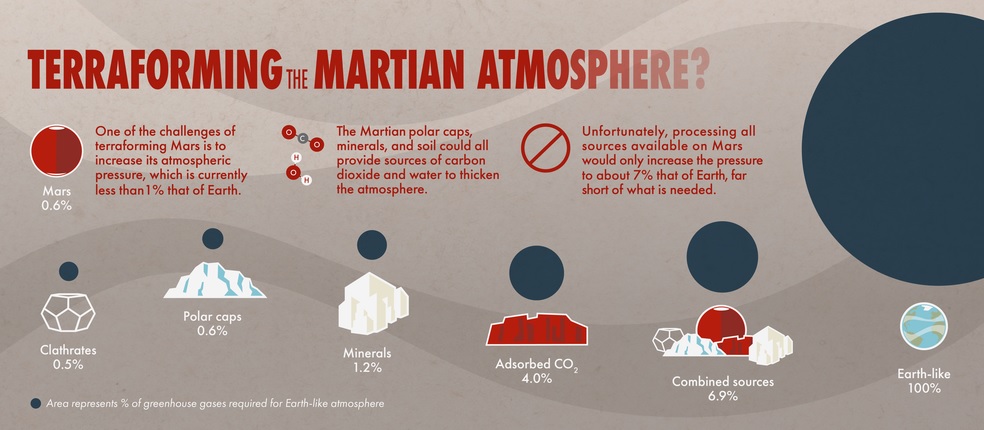
Basically, neither nuclear energy nor solar power could terraform Mars according to everyone it seems, or at least it’s not feasible for a time frame that stretches the patience of most dreamers. Let’s pretend, though, that the science isn’t so fatalistic for a minute. After all, we don’t really know the nitty gritty details about Musk’s thought process and why he doesn’t think NASA is correct on this issue. Assume that NASA and everyone else says this is something totally possible and would do exactly what Musk et al. want it to do. Our next problems are human haters and planetary protection advocates.
There are a good number of people, or at least good number of very vocal people, that don’t think humans even deserve to colonize Mars. We’ve got enough problems to solve on Earth, they say to some effect. Even Kim Stanley Robinson, the author of the influential Martian terraforming trilogy with the titles of Red, Green, and Blue Mars, has said that Mars ‘isn’t a backup planet’ and that we need to fix our problems here before porting them to our red neighbor. I’m not saying Stanley hates humans, but rather pointing out that even someone with a grand vision for our species doesn’t think we currently have much business acting as another planet’s steward. This type of opposition can be infectious once the debate gets serious.
If you followed the story about Israel’s spacecraft crash landing on the Moon with some tardigrades aboard, you probably saw the raging debate that followed about polluting another planetary body. Honestly, I’d heard about concerns of spacecraft contamination that could interfere with the accuracy of, say, regolith analysis (how do we know what we found didn’t hitchhike from Earth, etc.), but nothing on the scale that followed the tardigrades. It reminded me a bit of an episode of Star Trek: The Next Generation (sorry for all the Trekkie references) where a terraforming team was greatly upset that they’d interfered with the environment of a crystalline, inorganic life form possessing intelligence. One crew person even shed tears over it despite one of her crew members being killed by the beings that were invisible to their equipment.
The whole outcry about the tardigrades came down to an anti-private space exploration mantra, really. Followers of Musk know how much flak comes from challenging the narrative in this arena, but SpaceX has finally made enough headway in terms of accomplishments to have overcome some of the biggest detractions. Not all of them, of course, but the victories thus far give hope for the future plans. Seeing that there was this rabid ‘Planetary Protection Police’ out there (way beyond basic science concerns) was kind of depressing. How many others will come out of the woodwork once SpaceX is actually ready to land on Mars? And with private citizens wanting to relocate there, no less?
The combination of all these things I’ve discussed kind of paints a bleak picture for ever getting off the planet and/or creating another home for humans to live on. I still have faith, though. Like fellow writer Eric Ralph suggested to me, perhaps it will all fall to the wayside once there are actual boots on the ground. The movie may already be in the works despite it all:
How I Learned to Stop Worrying and Love Martian Bombs.

Lifestyle
Tesla Model S Plaid battles China’s 1500 hp monster Nurburgring monster, with surprising results
There is just something about Tesla’s tuning and refinement that makes raw specs seem not as game-changing.
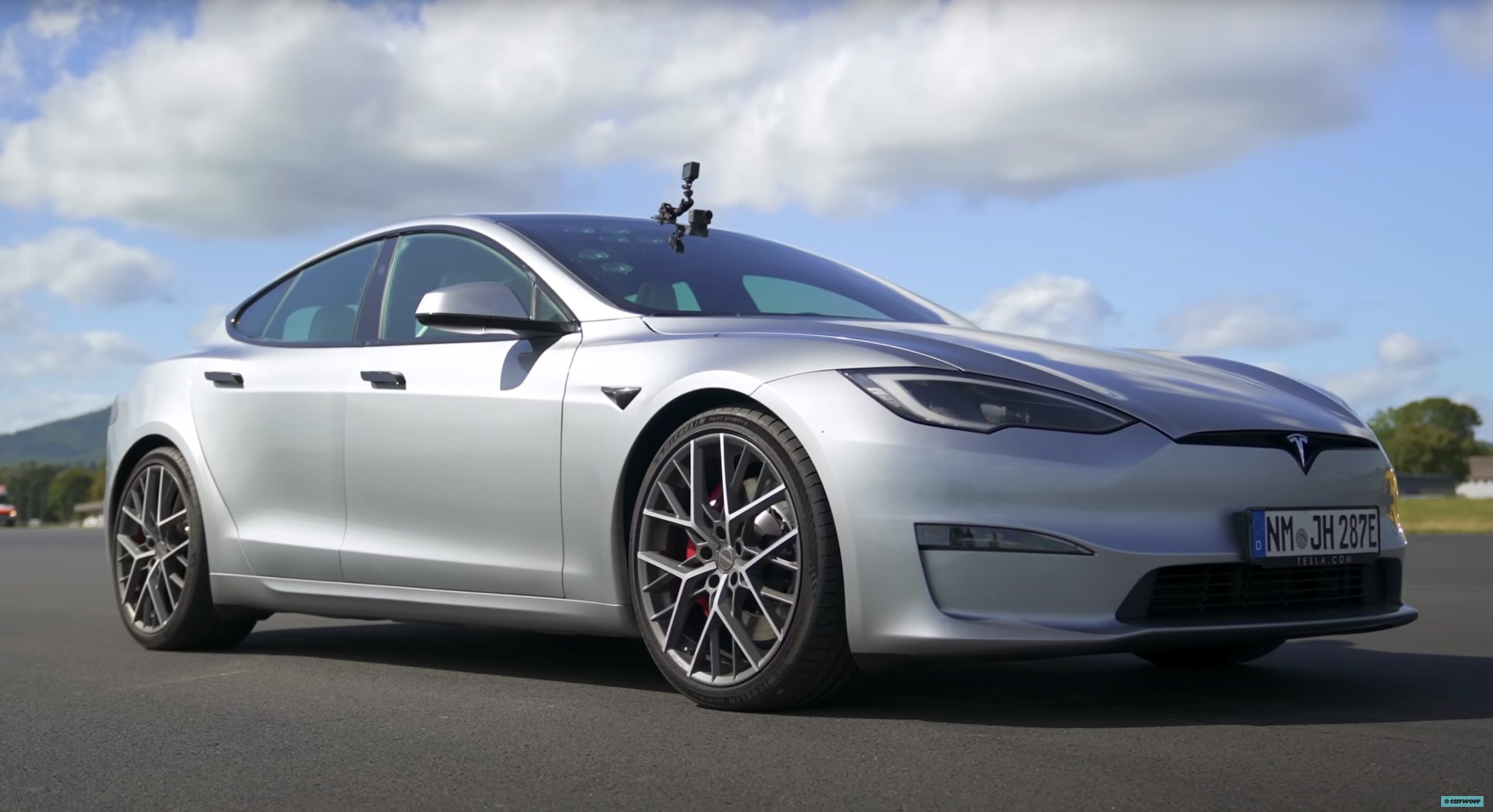
The Tesla Model S Plaid has been around for some time. Today, it is no longer the world’s quickest four-door electric sedan, nor is it the most powerful. As per a recent video from motoring YouTube channel Carwow, however, it seems like the Model S Plaid is still more than a match for some of its newer and more powerful rivals.
The monster from China
The Xiaomi SU7 Ultra is nothing short of a monster. Just like the Model S Plaid, it features three motors. It also has 1,548 hp and 1,770 Nm of torque. It’s All Wheel Drive and weighs a hefty 2,360 kg. The vehicle, which costs just about the equivalent of £55,000, has been recorded setting an insane 7:04.957 at the Nurburgring, surpassing the previous record held by the Porsche Taycan Turbo GT.
For all intents and purposes, the Model S Plaid looked outgunned in Carwow’s test. The Model S Plaid is no slouch with its three motors that produce 1,020 hp and 1,420 Nm of torque. It’s also a bit lighter at 2,190 kg despite its larger size. However, as the Carwow host pointed out, the Model S Plaid holds a 7:25.231 record in the Nurburgring. Compared to the Xiaomi SU7 Ultra’s record, the Model S Plaid’s lap time is notably slower.
Real-world tests
As could be seen in Carwow’s drag races, however, Tesla’s tech wizardry with the Model S Plaid is still hard to beat. The two vehicles competed in nine races, and the older Model S Plaid actually beat its newer, more powerful counterpart from China several times. At one point in the race, the Xiaomi SU7 Ultra hit its power limit due to its battery’s temperature, but the Model S Plaid was still going strong.
The Model S Plaid was first teased five years ago, in September 2020 during Tesla’s Battery Day. Since then, cars like the Lucid Air Sapphire and the Xiaomi SU7 Ultra have been released, surpassing its specs. But just like the Model Y ended up being the better all-rounder compared to the BYD Sealion 7 and the MG IM6, there is just something about Tesla’s tuning and refinement that makes raw specs seem not as game-changing.
Check out Carwow’s Model S Plaid vs Xiaomi SU7 drag race video below.
Lifestyle
500-mile test proves why Tesla Model Y still humiliates rivals in Europe
On paper, the BYD Sealion 7 and MG IM6 promised standout capabilities against the Model Y.
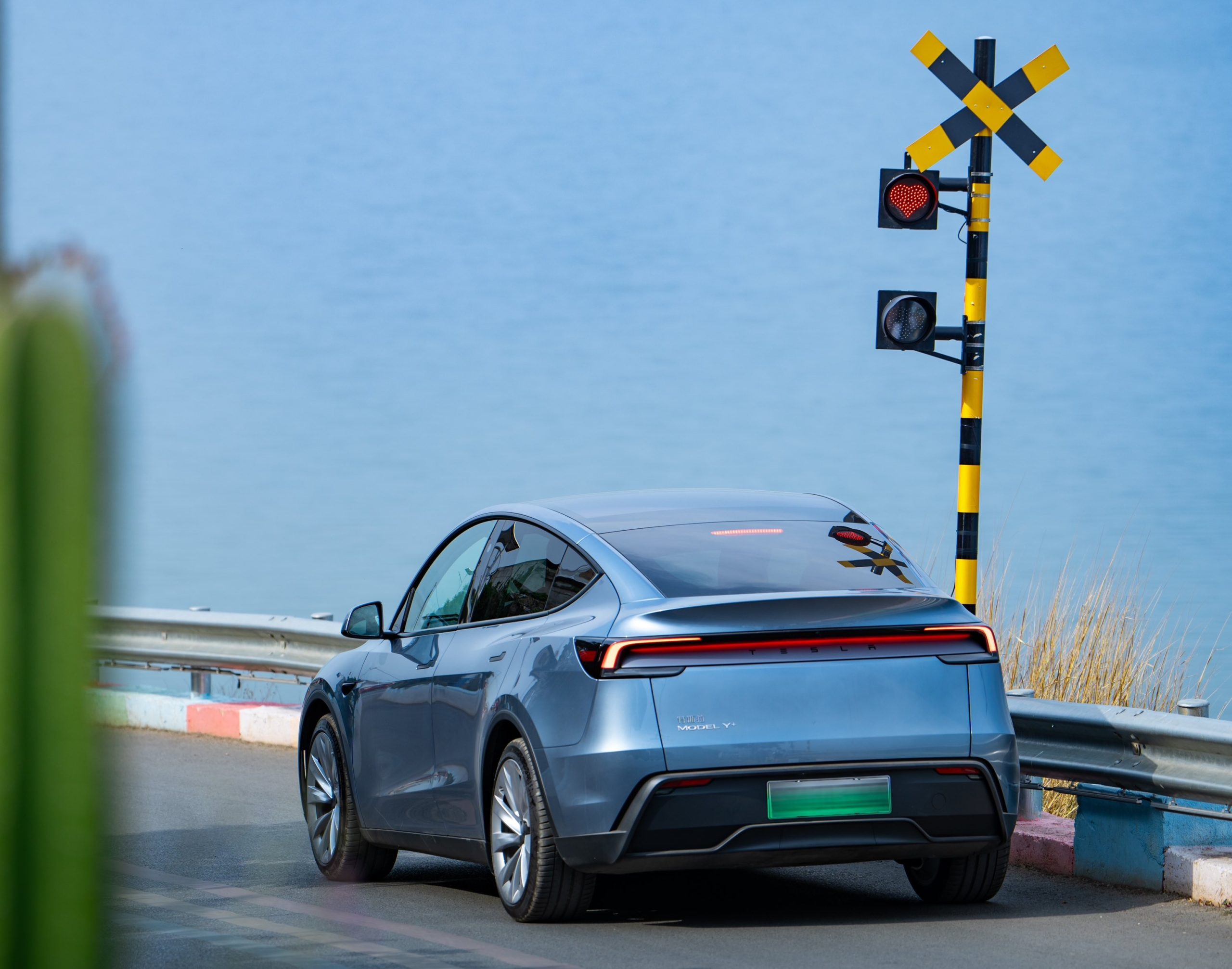
BYD is seeing a lot of momentum in Europe, so much so that mainstream media has taken every opportunity to argue that the Chinese automaker has beaten Tesla in the region. But while BYD sales this year in Europe are rising and Tesla’s registrations remain challenged, the raw capabilities of vehicles like the Model Y are difficult to deny.
This was highlighted in a 500-mile challenge by What Car? magazine, which showed that the new Tesla Model Y is more efficient, cheaper to run, and more reliable than rivals like the BYD Sealion 7, and even the nearly 400 KW-charging MG IM6.
Range and charging promises
On paper, the BYD Sealion 7 and MG IM6 promised standout capabilities against the Model Y. The Sealion 7 had more estimated range and the IM6 promised significantly faster charging. When faced with real-world conditions, however, it was still the Model Y that proved superior.
During the 500-mile test, the BYD nearly failed to reach a charging stop, arriving with less range than its display projected, as noted in a CarUp report. MG fared better, but its charging speeds never reached its promised nearly-400 kW charging speed. Tesla’s Model Y, by comparison, managed energy calculations precisely and arrived at each stop without issue.
Tesla leads in areas that matter
Charging times from 25% to 80% showed that the MG was the fastest at 17 minutes, while Tesla and BYD were close at 28 and 29 minutes, respectively. Overall efficiency and cost told a different story, however. The Model Y consumed 19.4 kWh per 100 km, compared to 22.2 for MG and 23.9 for BYD. Over the full trip, Tesla’s charging costs totaled just £82 thanks to its supercharger network, far below BYD’s £130 and MG’s £119.
What Car? Magazine’s testers concluded that despite BYD’s rapid sales growth and the MG IM6’s seriously impressive charging speeds, Tesla remains the more compelling real-world choice. The Model Y just offers stability, efficiency, and a proven charging infrastructure through its Supercharging network. And as per the magazine’s hosts, the Model Y is even the cheapest car to own among the three that were tested.
Watch What Car? Magazine’s 500-mile test in the video below.
Lifestyle
Tesla Cybertruck slapped with world’s least intimidating ticket, and it’s pure cringe
One cannot help but cringe and feel second-hand embarrassment at the idea of a person just driving around with a stack of these babies.
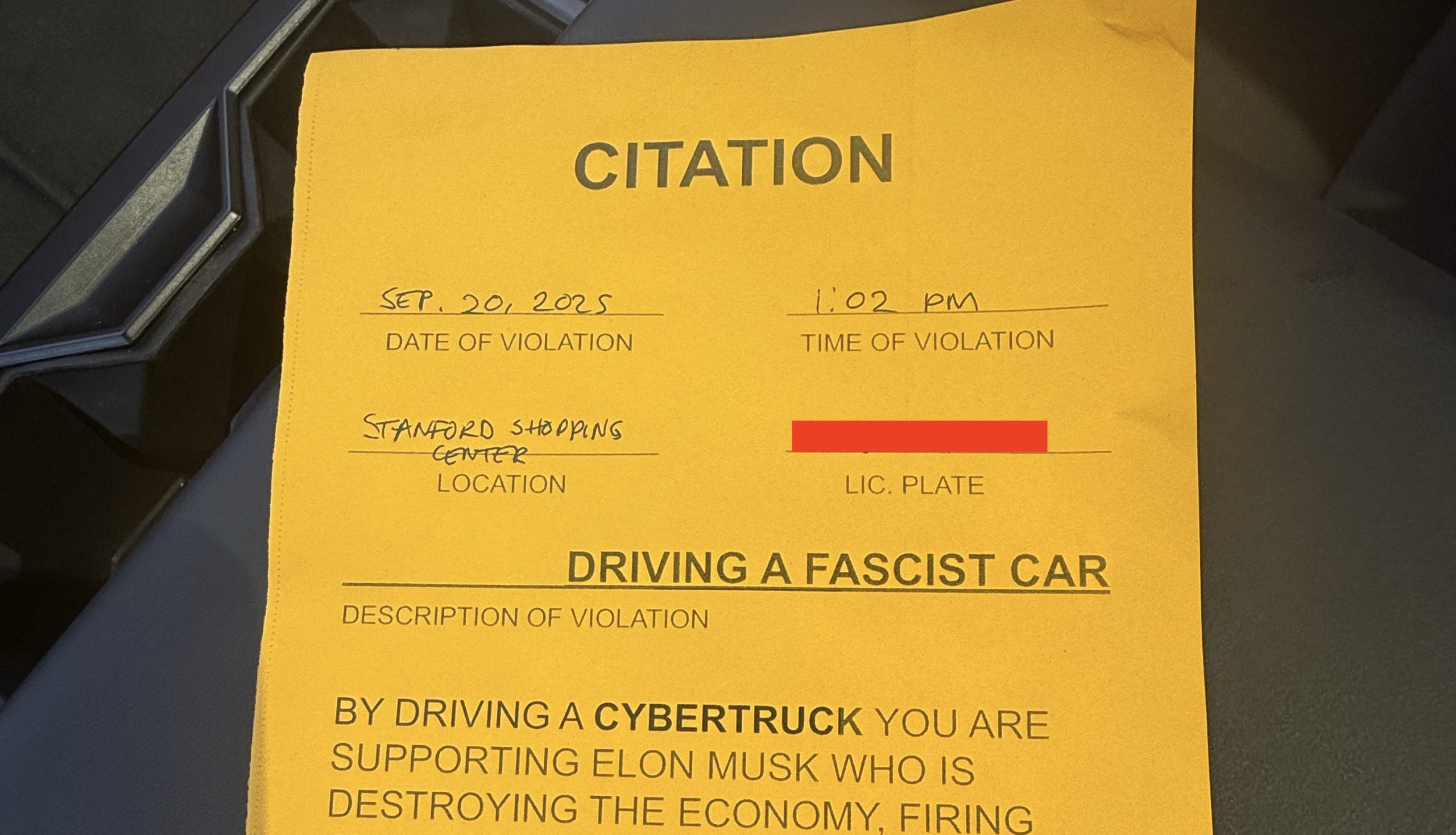
A Cybertruck parked at Stanford Shopping Center in California was recently hit with what might be the most try-hard piece of paper ever slipped under a wiper blade: a “fake citation” accusing the driver of supporting a “fascist car.”
The note, shared on X by Tesla staff program manager Ryan Torres, quickly made the rounds on X, where it quickly gained attention as an example of how not to protest.
The world’s least intimidating ticket
According to the citation, the supposed “violation” was “driving a fascist car.” The remedial action? Take the bus, call an Uber, or ride a bike. The note also dubbed Elon Musk a “chainsaw-wielding Nazi billionaire.” Now, protests against Tesla and Elon Musk have become commonplace this year, but one cannot help but cringe and feel second-hand embarrassment at the idea of a person just driving around with a stack of fake anti-Tesla/Musk citations.
Torres pointed out the irony himself in his post on X. Tesla currently employs over 140,000 Americans, and SpaceX has put the U.S. firmly back at the top of space technology. As Torres put it, maybe the person behind the world’s least intimidating ticket should “read a book on innovation before vandalizing” other people’s property.
Peak performative clownery
Not to mention that the fake ticket’s logic collapses under its own weight. EVs like the Cybertruck are literally designed to reduce emissions, not “destroy the economy.” If anything, Tesla has bolstered the United States’ economy by fueling jobs in engineering, manufacturing, and clean energy. It’s not the first time a Tesla has been the target of vandalism or politically charged notes, but this one stands out for sheer cringe value.
Torres summed it up neatly: “Peak clownery.” On that point, at least, the citation earns full marks. In a way, though, perhaps cringe fake tickets are not as bad as the literal firebombs that were being thrown at Tesla stores and cars earlier this year because some critics were gleefully misinformed about Elon Musk.








